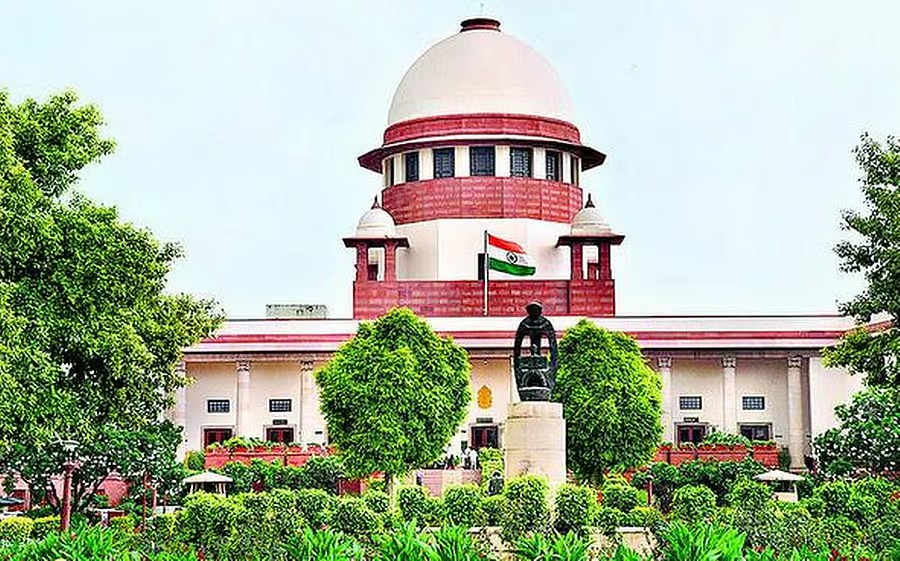@JUDGMENTTAG-ORDER
G.P. Singh, J.
The suit in which this revision arises was instituted by 4 plaintiffs, namely, Rambishal, Bhagwandas, Ramkhelawan and Mst. Bhagwania. The first three are brothers. Smt. Bhagwania is their aunt. The suit is for possession of certain portions of Khasra Nos. 244 and 301 of village Pipri. The case as laid in the plaint is that plaintiff No. 4 Smt. Bhagwania held one-third share in these lands and the remaining two-third was held by the other three plaintiffs. It is further alleged that the defendants forcibly took possession of the suit portions of the aforesaid Khasra numbers in July 1963. Plaintiff No. 1 Rambishal died sometime in 1967. No application was made for substitution of his legal representatives. Plaintiff No. 2 Bhagwandas died on 29th May 1976. An application was made on 21st June 1976 for substitution of his legal representatives. In this application, it was alleged that plaintiff No. 1 Rambishal and plaintiff No. 3 Ramkhelawan were joint and after Rambishal''s death, Ramkhelawan became the Karta of the family and was in that capacity competent to represent the interest of Rambishal after his death. It was prayed in the application that the legal representatives of plaintiff No. 2 Bhagwandas be substituted and it be held that Rambishal''s death had no effect on the suit because his interest was represented by plaintiff No. 3 Ramkhelawan. The defendants opposed this application on the ground that Rambishal left behind his widow, sons and daughters who were his legal representatives and who ought to have been substituted within limitation in his place. It was contended that Rambishal''s interest could not be represented by plaintiff No. 3 Ramkhelawan. The allegation that Rambishal and plaintiff No. 3 Ramkhelawan constituted a joint Hindu family was denied. It was further contended that on Rambishal''s death the suit abated in so far as his interest was concerned and that as the interest of plaintiffs 1 to 3 was not defined, the entire suit abated. The trial Court did not hold any enquiry whether the deceased plaintiff No. 1 Rambishal and plaintiff No. 3 Ramkhelawan were joint or separate. The trial Court assumed that they were joint and on this assumption it was held that after the death of Rambishal, Ramkhelawan as Karta of the family continued to represent the interest of Rambishal and there was no abatement of the suit even as regards Rambishal. By the same order, the trial Court substituted the heirs of the deceased plaintiff No. 2 Bhagwandas in his place. It is against this order that the present revision has been filed.
I have earlier stated that the fact that the deceased plaintiff No. 1 Rambishal and plaintiff No. 3 Ramkhelawan were joint was disputed by the defendants. The trial Court, therefore, should have held an enquiry on this point under Order 22, Rule 5, of the Code of Civil Procedure. The trial Court was clearly wrong in assuming that they were joint without holding an enquiry. However, it is not necessary to remand the case for an enquiry on this question because even on the assumption that Rambishal was joint with Ramkhelawan, I am of the opinion that the suit in so far as Rambishal is concerned has abated. It is not disputed before me that Rambishal left behind his widow, sons and daughters as his heirs. Some of the daughters are married. The interest of Rambishal, even on the assumption that he was joint with Ramkhelawan, devolved by intestate succession and not by survivorship in accordance with the proviso to section 6 of the Hindu Succession Act. The interest of Rambishal which passed to his heirs (widow, sons and daughters) is that share in the property that would have been allotted to him if a partition of the property had taken place immediately before his death. This is so because Explanation 1 to section 6 by legal fiction separates the share of a deceased coparcener who leaves behind him surviving a female relative specified in Class I of the Schedule or a male relative, specified in that class, who claims through such female relative. Under the Hindu law, no individual member of a coparcenary while it remains undivided can predicate that he has a defined share. His interest is a fluctuating interest capable of being enlarged by deaths in the family and liable to be diminished by births in the family. It is only on a partition that he becomes entitled to a definite share. Explanation 1 to section 6 fixed the interest of a deceased coparcener on the basis of a notional portion at the time of his death. It is this defined interest which passes to his heirs. The heirs of a deceased coparcener thus do not take any fluctuating interest in the coparcenary property, but a defined interest in accordance with the Explanation. The heirs of a deceased coparcener cannot, therefore, be called coparceners. The heirs may include, as in the instant case married daughters and others who belong to another family. It is, therefore, clear that the heirs of a deceased coparcener, whose succession is governed by the proviso to section 6, do not enter the coparcenary to which the deceased coparcener belonged. The Karta of the coparcenary to which the deceased coparcener belonged cannot, therefore, represent the heirs. The view that I have taken is in line with the view taken by the Kerala High Court in
The Learned Counsel for the non-applicants has relied upon
On the death of plaintiff No. 1 Rambishal, as his legal representatives were not substituted within time, the suit in so far as he was concerned abated. It is, however, contended by the Learned Counsel for the non-applicants that as the suit was for recovery of possession from trespassers, the surviving co-sharers, who were parties to the suit, could continue the entire suit and there was no abatement even as regards the deceased plaintiff No. 1 Rambishal. Reliance in this connection is placed on
Learned Counsel for the applicants has contended before me that the abatement of suit as regards Rambishal had the effect of abating the suit as a whole. In my opinion, there is no merit in this contention. As the suit so far as Rambishal is concerned has abated, the surviving plaintiffs cannot recover the interest of Rambishal in the suit land from the defendants. The surviving plaintiffs would, therefore, be not in a position to obtain a decree for actual possession, but there would be no difficulty in passing a decree for joint possession leaving it to the plaintiffs to get their shares separated in a subsequent suit for partition [See
The revision is partly allowed. The order of the trial Court, dated 12th October 1976, is set aside to the extent it holds that the suit has not abated even as regards the deceased plaintiff No. 1 Rambishal. The trial Court shall proceed with the suit in the light of the observations made above on the footing that the suit has abated as regards the deceased plaintiff No. 1 Rambishal. There shall be no order as to costs of this revision.

